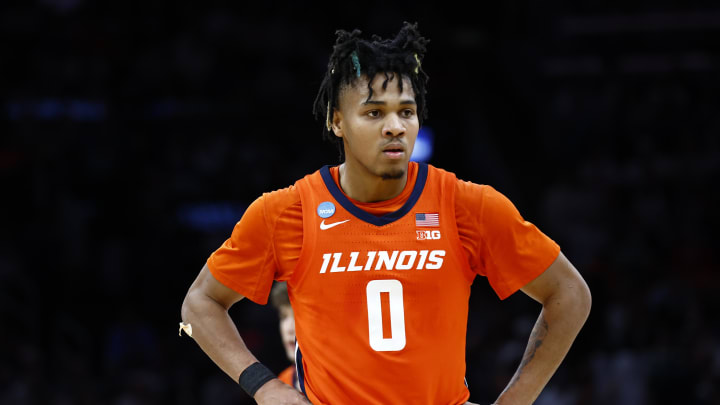'He's a blur': Terrence Shannon Jr. can be 'ready-to-play' transition bucket for Wolves

Chris Finch stressed often throughout last season the need for the Timberwolves to convert more in transition, one of their weaknesses during the 2023-24 campaign.
Some of that has to do with the construction of the roster. The Timberwolves feature a two-big lineup with Karl-Anthony Towns and Rudy Gobert that naturally wouldn’t be among the fastest in the NBA. But the Wolves ranked 29th of the 30 NBA teams in fast-break points per game at 12.4, and Finch would often point to the transition opportunities that came up fruitless.
Addressing that issue and finding an additional scoring punch has been a clear offseason focus for the Wolves. While the starting lineup, which returns from a season ago, won’t get any faster, the roster changes the Wolves did make — including drafting Rob Dillingham and Terrence Shannon Jr. in the first round of this year’s NBA draft — could bring a rise in transition buckets.
Shannon in particular could be a player to look out for. Wolves assistant Chris Hines, who’s coaching the Summer League team that will feature Shannon and Dillingham, among others, told Paul Allen on KFXN-FM Wednesday that Shannon’s speed in transition will surprise people.
“I mean, he’s a blur,” Hines told Allen. “I’ve been around the game for 10 years coaching. I’ve coached some of the best players in the world and work with some of them, and this kid is super fast in the open floor and he’s super aggressive at the rim and he’s tenacious off the catch, too as well. He’s a guy I look at as maybe a ready-to-play now guy.
“Obviously experience in the NBA is where these young guys need to get to, but I love him. And he’s super coachable, so I think his development will move on pretty quick.”
Shannon’s speed could bring some needed pace to the Timberwolves’ second unit, one Finch typically likes to see play faster with the starting unit built on the slow side.
Last season, Shannon helped Illinois rank No. 94 of 351 Division I programs with 11.47 fast-break points per game on its way to the Elite Eight of the NCAA Tournament. That mark was fourth best in the Big Ten behind just Rutgers (12.22), Michigan State (14.09) and Iowa (14.85).
Meanwhile, Shannon, 23, also provides a needed skillset as a scorer who can create for himself. Shannon was among the nation’s leading scorers last season, averaging 23.0 points on 48% shooting, including a 36% mark from 3, as well as 4.0 rebounds and 2.3 assists per game.
Dillingham, too, is another player who can bring pace and provide the Wolves with a scoring punch, particularly as a player who can beat defenders off the dribble. Hines told Allen that Dillingham has the potential to be an “elite scorer” but that it may take some time before he gets there. Hines believes Dillingham can be an adept playmaker, too.
Both Shannon and Dillingham have the potential to help the Timberwolves improve in transition this season, they’ll just need to get ready for NBA-level basketball first. That begins this Friday when the Wolves open their Summer League schedule with a game against the New Orleans Pelicans. Overall, the Summer League will be about developing the young Wolves into players who can contribute at the highest level this fall.
“The biggest thing for me, and I’ve told the staff, is teaching these guys,” Hines told Allen. “How do we teach and win at the same time, right? And that’s one of the hardest things I think in Summer League that you have to do.”
_copy-193049cae6dc1e93cd8c7fe9f1b4ad79.jpg)